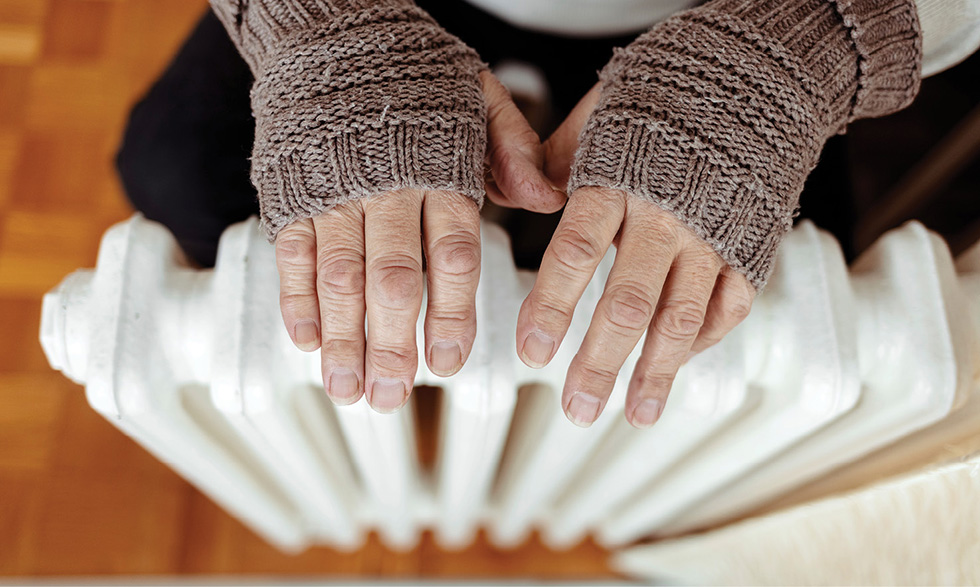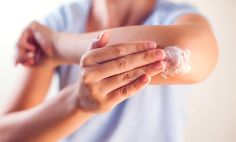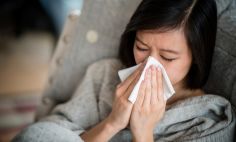What is hypothermia?
Cold temperatures can cause hypothermia, which occurs when your body temperature drops below 95 degrees Fahrenheit (35 degrees Celsius). Hypothermia can lead to health problems like heart attacks, kidney problems, liver damage, or death. Warning signs include:
- Shivering
- Exhaustion
- Confusion
- Memory loss
- Fumbling hands
Infants and older adults are especially at risk for hypothermia because they have a harder time regulating their body temperature. Medical conditions in older adults can also increase risks. Even a small drop in the surrounding temperature or a short time spent outside in the cold can cause a large drop in body temperature in infants and older adults.
And according to the National Institute on Aging, living in a poorly heated home can also cause hypothermia. To avoid developing hypothermia indoors, place a rolled towel in front of doors to keep out drafts, make sure windows are weather stripped or caulked if they have gaps, and keep indoor temperatures above 68 degrees Fahrenheit (20 degrees Celsius).
How to treat hypothermia
- If someone has hypothermia, they should seek medical care as soon as possible and take the following steps:
- Get into a warm car or room
- Remove any wet clothing
- Warm the core of their body (chest, neck, head, and groin) using an electric blanket or skin-to-skin contact under loose, dry layers of blankets
- Drink warm, nonalcoholic drinks
What is frostbite?
Frostbite can happen when air temperatures fall below 5 degrees Fahrenheit (-15 degrees Celsius). In wind chills of -16.6 degrees Fahrenheit (-27 degrees Celsius), frostbite can occur on exposed skin within 30 minutes. Although frostbite can happen anywhere on the body, it typically affects exposed areas like the nose, ears, cheeks, chin, fingers, and toes. During the early stages, you’ll likely feel pins and needles in the affected areas, followed by numbness. These areas will eventually turn white and start to appear waxy, hard, and cold to the touch.
How to treat frostbite
If someone thinks they have frostbite, they should seek immediate medical care and take the following steps:
- Get into a warm car or room
- Try not to walk on frostbitten feet or toes
- Put the frostbitten area in warm (not hot) water
- Use body heat, such as an armpit, to warm the frostbitten area
- Cover the area with a clean cloth—if fingers or toes are frostbitten, wrap each one individually
- Don’t rub the frostbitten area
- Avoid touching hot surfaces with the frostbitten area

Living in a poorly heated home can cause hypothermia. Weatherproof your home by stopping drafts from doors and windows.
How to prevent hypothermia and frostbite
To avoid hypothermia or frostbite when going outside in cold weather:
- Dress in layers
- Wear warm clothing and waterproof shoes to protect your hands, feet, neck, and face
- Bring plenty of fluids such as water and food high in protein and fat. For short stays outside, bring carbohydrates for quick energy boosts.
- Avoid alcoholic drinks because they make your body lose heat faster
- Keep moving to stay warm, but don’t exhaust yourself
Be prepared to get out of the cold, wind, rain, or snow as quickly as possible if you notice signs of hypothermia or frostbite.
How to prepare for a cold-weather emergency
Winter storms and other cold-related emergencies such as power outages can happen fast. It’s best to be prepared if you need to take shelter at home or travel to a safe place:
At home
- Make a disaster plan that includes important phone numbers such as for your doctor and pharmacy
- Keep out cold air by insulating, caulking, and weather stripping your home
- Gather supplies, including nonperishable food and water, in case you need to stay home for several days without power
- Have your chimney or flue inspected each year if you plan to use your fireplace or wood stove for emergency heating
- Install battery-operated smoke and carbon monoxide detectors
In your car
Keep an emergency kit with supplies such as:
- Extra warm clothing and blankets
- An ice scraper
- A snow shovel
- Cat litter or sand to help tires grip on snow and ice
- Water and nonperishable food
- Jumper cables
- A first aid kit with any necessary medicines
- A pocketknife
- A battery-powered radio, a flashlight, and extra batteries
- Emergency flares or distress flags
- Waterproof matches and an empty tin can to melt snow for water
*This article was originally published on February 28, 2022. It has been updated.







